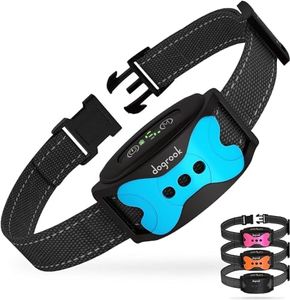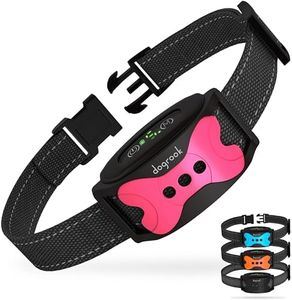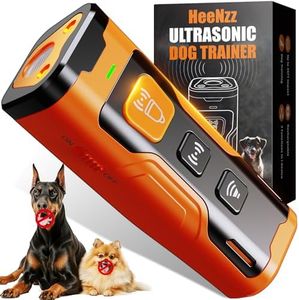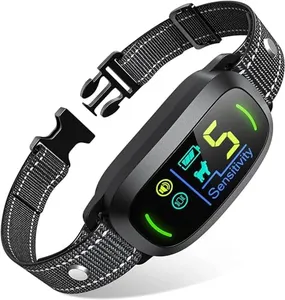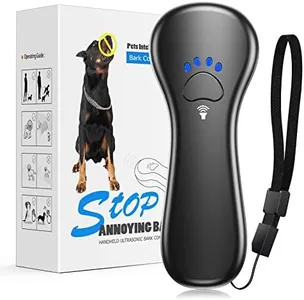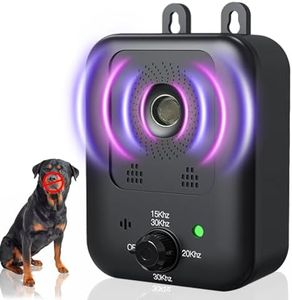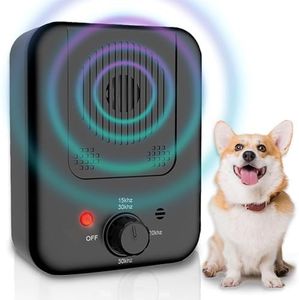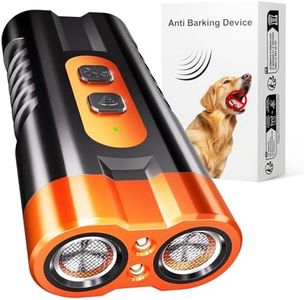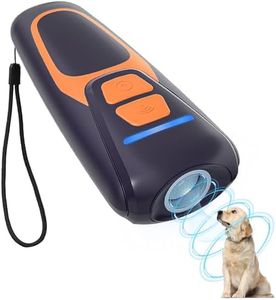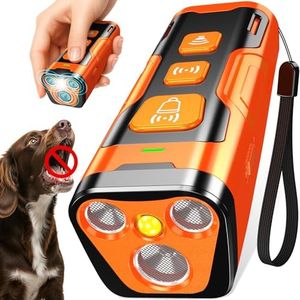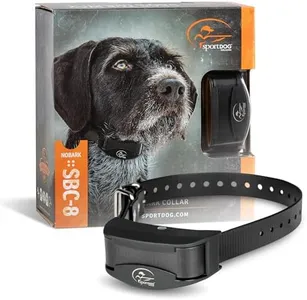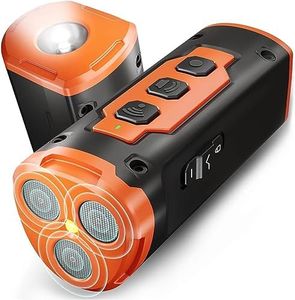We Use CookiesWe use cookies to enhance the security, performance,
functionality and for analytical and promotional activities. By continuing to browse this site you
are agreeing to our privacy policy
10 Best Anti Bark Devices
From leading brands and best sellers available on the web.Buying Guide for the Best Anti Bark Devices
Choosing the right anti-bark device for your dog is all about understanding your pet's needs and behavior. These devices are designed to help manage or reduce excessive barking, but it's important to approach their use humanely and thoughtfully. Before making a purchase, consider why your dog is barking and whether training or environmental changes might be more effective. Think about your living situation, your dog’s temperament, and how you prefer to interact with your pet. Always prioritize your dog's well-being and comfort.Type of DeterrentThis refers to the method the device uses to discourage barking, such as sound, vibration, spray, or mild static. This is important because different dogs respond to different deterrents. Sound-based devices emit a high-pitched tone only dogs can hear; vibration collars gently buzz; spray types emit a harmless mist near the dog’s face; and static collars deliver a light pulse. For gentle or anxious dogs, non-static options like sound or vibration can be more appropriate, while persistent barkers may need a more noticeable deterrent. Match the deterrent type to your dog's sensitivity and temperament for the most humane approach.
Activation MethodThis spec explains how the device detects barking and triggers a response. Most work by sensing the dog’s vocal cord vibrations, microphone-detected noise, or a combination. Devices with both sensors are less likely to activate due to other dogs or background noise, making them better for homes with multiple pets or noisy environments. If your dog is often around other barking dogs or in places with a lot of noise, look for a dual detection device for accurate triggering.
Sensitivity LevelsSensitivity levels let you adjust how easily the device activates in response to barking. This matters because some dogs have softer barks or may vocalize for good reasons (like alerting you to danger). Adjustable sensitivity helps you avoid false corrections and tailor the device to your individual pet. If your dog is very vocal, a lower sensitivity setting can prevent accidental triggers, while more sensitive settings suit quieter dogs.
Range or CoverageRange applies mainly to standalone units (not collars) that are placed in a room or yard to detect barking. The range determines how far the device can pick up the bark and deliver the deterrent. For small apartments, a shorter range is enough, but for large homes or outdoor use, a longer range ensures effectiveness. Think about where your dog spends most time and choose accordingly.
Battery Life and Power SourceThis indicates whether the device runs on replaceable batteries, rechargeable batteries, or has a plug-in option. Battery life is important for convenience and consistent use. If you travel often or use the device outside, look for rechargeable options with long battery life. For stationary, indoor use, plug-in types save you from frequent battery changes.
Water ResistanceIf you plan to use the device outside, water resistance is crucial to prevent damage from rain or splashes. For purely indoor use, this feature may be less important. Consider your typical environment to decide whether you need this protection.
Size and Fit (for Collars)This refers to how the collar fits on your dog’s neck. It's important for comfort and safety. Too loose, and it won't work properly; too tight, and it could hurt your dog. Many collars are adjustable for different breeds and sizes. Always measure your dog’s neck and check the fit guidelines to ensure the right choice.
